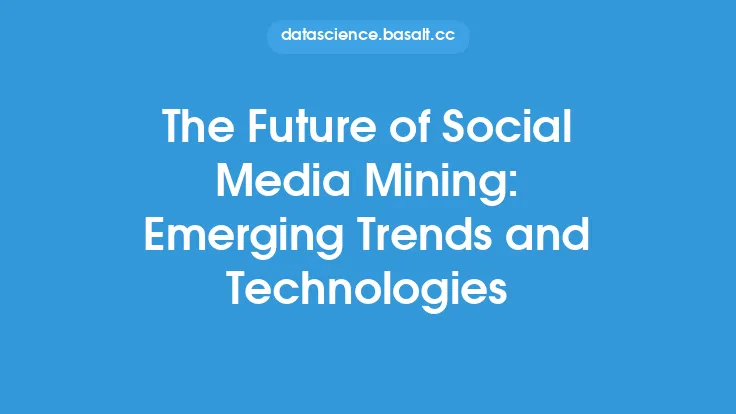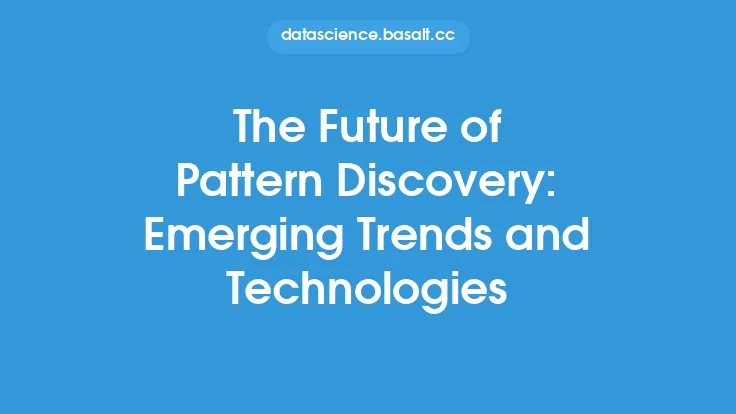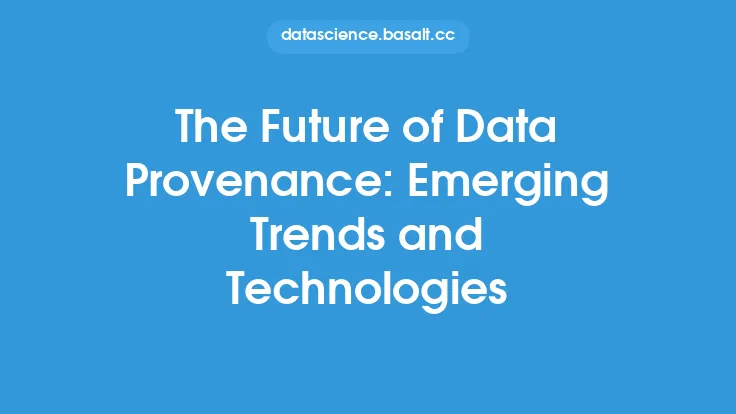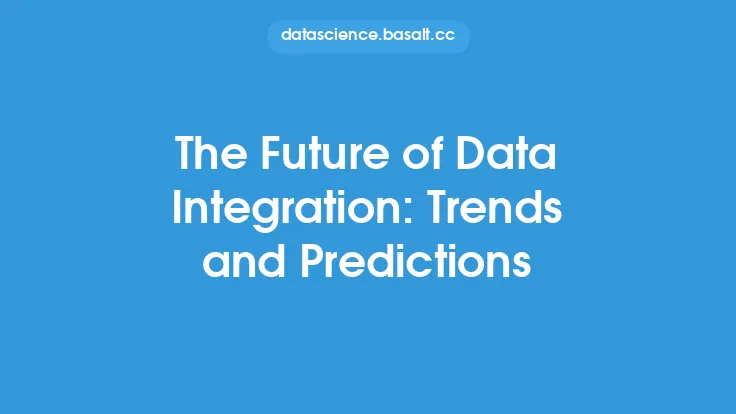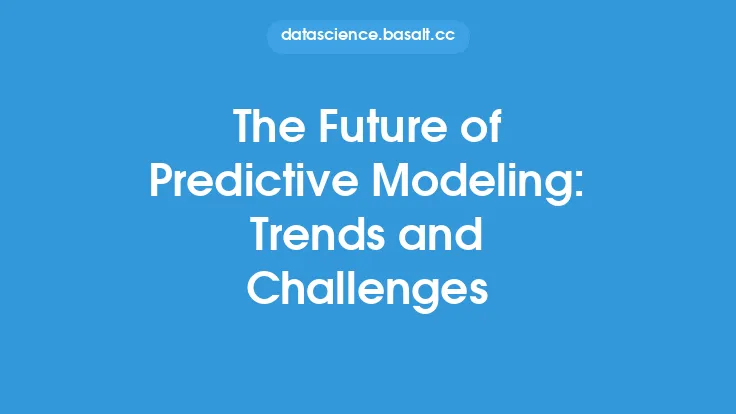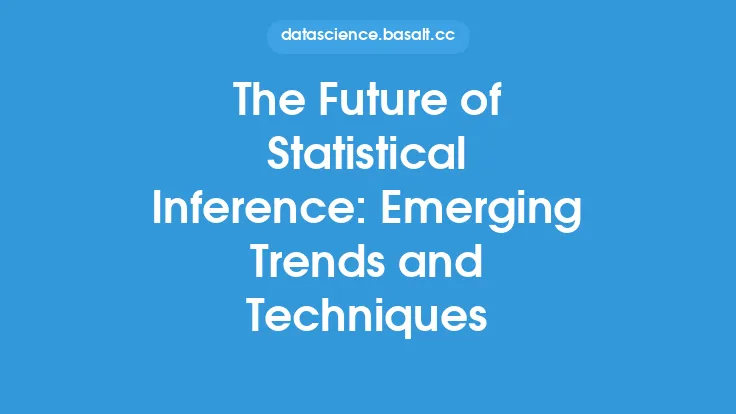The field of text mining has experienced significant growth and advancements in recent years, driven by the increasing availability of large volumes of unstructured text data and the need to extract valuable insights from it. As a result, the future of text mining is expected to be shaped by several emerging trends and technologies that will enable more efficient, effective, and scalable text analysis. In this article, we will explore the current state of text mining, the trends that are driving its evolution, and the emerging technologies that will shape its future.
Introduction to Emerging Trends
The future of text mining will be characterized by several emerging trends that will have a significant impact on the field. One of the most significant trends is the increasing use of deep learning techniques for text analysis. Deep learning algorithms, such as convolutional neural networks (CNNs) and recurrent neural networks (RNNs), have been shown to be highly effective in text classification, sentiment analysis, and topic modeling tasks. Another trend is the growing importance of explainability and interpretability in text mining. As text mining models become more complex and sophisticated, there is a need to develop techniques that can provide insights into how these models work and why they make certain predictions.
Advances in Natural Language Processing
Natural language processing (NLP) is a critical component of text mining, and advances in NLP are expected to have a significant impact on the field. One of the most significant advances in NLP is the development of transformer-based architectures, such as BERT and RoBERTa. These architectures have been shown to be highly effective in a wide range of NLP tasks, including text classification, sentiment analysis, and question answering. Another advance in NLP is the growing use of multimodal processing, which involves analyzing text in conjunction with other modalities, such as images and videos. This can provide a more comprehensive understanding of the meaning and context of text data.
The Role of Big Data and Cloud Computing
The increasing availability of large volumes of text data has created a need for more scalable and efficient text mining techniques. Big data and cloud computing are expected to play a critical role in the future of text mining, enabling the analysis of large volumes of text data in a fast and efficient manner. Cloud-based text mining platforms, such as Amazon Comprehend and Google Cloud Natural Language, provide a scalable and on-demand infrastructure for text analysis, making it possible to analyze large volumes of text data without the need for significant upfront investment in hardware and software.
Emerging Technologies
Several emerging technologies are expected to shape the future of text mining, including graph-based methods, transfer learning, and quantum computing. Graph-based methods, such as graph convolutional networks (GCNs) and graph attention networks (GATs), provide a powerful framework for modeling complex relationships between text entities. Transfer learning, which involves using pre-trained models as a starting point for text analysis tasks, can significantly improve the accuracy and efficiency of text mining models. Quantum computing, which is still in its early stages, has the potential to revolutionize text mining by providing a new paradigm for text analysis that is based on quantum mechanics.
Applications and Use Cases
The future of text mining will be characterized by a wide range of applications and use cases, including customer service chatbots, sentiment analysis, and topic modeling. Customer service chatbots, which use text mining to analyze customer inquiries and provide personalized responses, are becoming increasingly popular in industries such as retail and finance. Sentiment analysis, which involves analyzing text data to determine the sentiment or emotional tone of customers, is a critical application of text mining in marketing and customer service. Topic modeling, which involves analyzing large volumes of text data to identify underlying themes and topics, is a key application of text mining in research and academia.
Challenges and Limitations
Despite the many advances and emerging trends in text mining, there are several challenges and limitations that must be addressed. One of the most significant challenges is the need for high-quality training data, which can be time-consuming and expensive to obtain. Another challenge is the need for more explainable and interpretable text mining models, which can provide insights into how these models work and why they make certain predictions. Additionally, there is a need for more scalable and efficient text mining techniques, which can analyze large volumes of text data in a fast and efficient manner.
Conclusion
The future of text mining is expected to be shaped by several emerging trends and technologies, including deep learning, NLP, big data, and cloud computing. These trends and technologies will enable more efficient, effective, and scalable text analysis, and will have a significant impact on a wide range of applications and use cases. However, there are also several challenges and limitations that must be addressed, including the need for high-quality training data, more explainable and interpretable models, and more scalable and efficient techniques. As the field of text mining continues to evolve, it is likely that we will see significant advances in these areas, and that text mining will become an increasingly important tool for extracting valuable insights from large volumes of unstructured text data.
